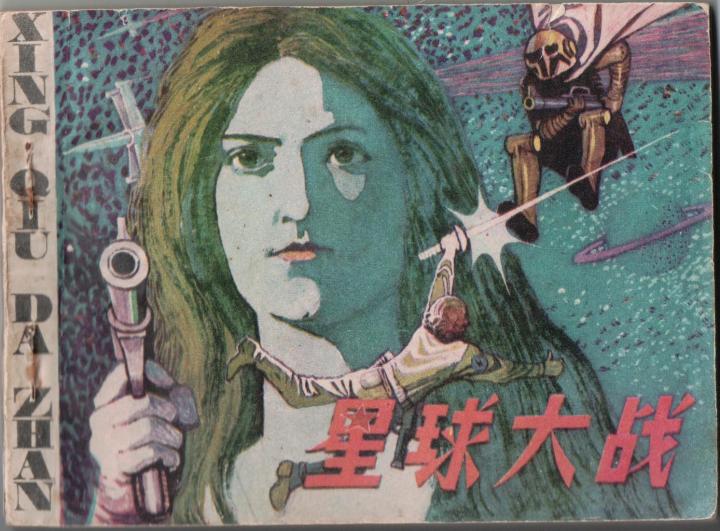
If you don’t remember the scene in Star Wars when Darth Vader paced back and forth in front of a galactic map depicting the location of the Kennedy Space Center, you’re not alone. However, if your only connection to George Lucas’ 1977 sci-fi epic was through one of the many bootleg comics published in China that disseminated western pop culture throughout the more remote regions of the country, that scene was a very important — if not entirely logical — element in the story of the Jedi Knights’ battle against the Empire.
Maggie Greene, a Chinese historian and assistant professor at Montana State University, recently posted some images from a comic published around 1980 that she picked up at a Shanghai book fair. Created in the style of palm-sized books that were used to spread propaganda and pass along tales from Chinese history, the lianhuanhua comics occasionally served as a pre-internet means of delivering popular media from other cultures — in this particular case, Star Wars.
“I suppose one of the defining features of modern Chinese cultural production (or perceptions of it, at least) is rather rampant IP violations,” wrote Greene on her website. “But at the same time people are amazed by the speed with which Chinese pirates hop on all sorts of (re)production, I think we often forget how quickly culture circulated before the internet.”
The comic — titled Xing Qiu Da Zhan (Chinese for “Star Wars”) — follows the basic narrative of the film relatively well, but offers up some amusing divergences from the source material, including the appearance of the Kennedy Space Center on Vader’s galactic map, as well as a shifting visual depiction of Han Solo’s partner, Chewbacca. The hairy Wookie is alternately seen as something akin to his appearance in the film or as a large, Planet of the Apes-style simian creature.
As Greene points out, there are also some interesting depictions of what the artist must have assumed to be common American practices and settings, including a panel featuring Luke Skywalker and his aunt and uncle sitting down to dinner in a trendy kitchen around a slow-cooker pot while someone cooks a duck in a toaster oven.
“It seems pretty obvious from the drawings that the artists weren’t always working from an actual film, or really much at all,” adds Greene.
You can look through the entire comic at Greene’s website, where she also offers up a bit more historical context for lianhuanhua and their role in Chinese culture during the 20th Century. A nice, sequential scan of the pages in a more manageable resolution can also be found here.



